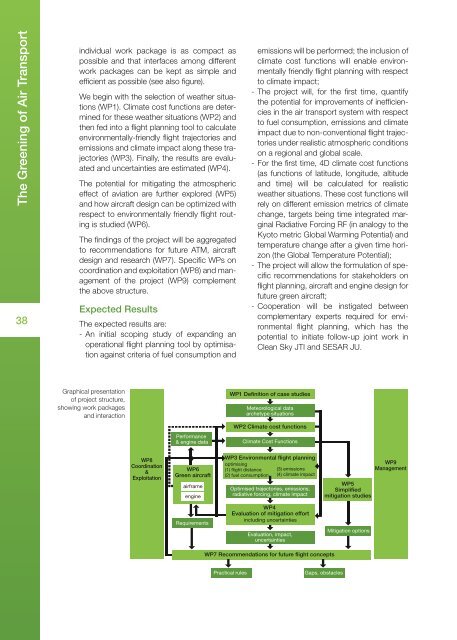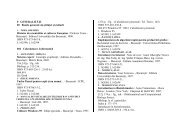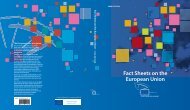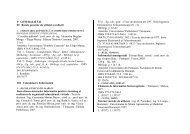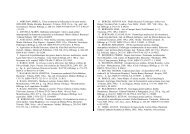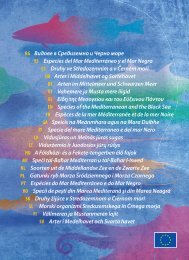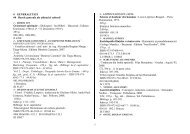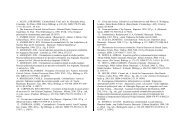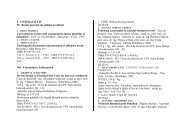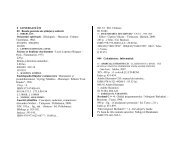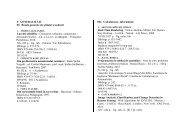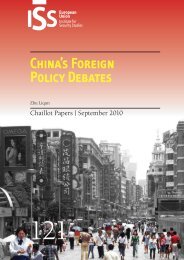Aeronautics and Air Transport Research 7th Framework Programme ...
Aeronautics and Air Transport Research 7th Framework Programme ...
Aeronautics and Air Transport Research 7th Framework Programme ...
Create successful ePaper yourself
Turn your PDF publications into a flip-book with our unique Google optimized e-Paper software.
The Greening of <strong>Air</strong> <strong>Transport</strong><br />
38<br />
individual work package is as compact as<br />
possible <strong>and</strong> that interfaces among different<br />
work packages can be kept as simple <strong>and</strong><br />
effi cient as possible (see also fi gure).<br />
We begin with the selection of weather situations<br />
(WP1). Climate cost functions are determined<br />
for these weather situations (WP2) <strong>and</strong><br />
then fed into a fl ight planning tool to calculate<br />
environmentally-friendly fl ight trajectories <strong>and</strong><br />
emissions <strong>and</strong> climate impact along these trajectories<br />
(WP3). Finally, the results are evaluated<br />
<strong>and</strong> uncertainties are estimated (WP4).<br />
The potential for mitigating the atmospheric<br />
effect of aviation are further explored (WP5)<br />
<strong>and</strong> how aircraft design can be optimized with<br />
respect to environmentally friendly fl ight routing<br />
is studied (WP6).<br />
The fi ndings of the project will be aggregated<br />
to recommendations for future ATM, aircraft<br />
design <strong>and</strong> research (WP7). Specifi c WPs on<br />
coordination <strong>and</strong> exploitation (WP8) <strong>and</strong> management<br />
of the project (WP9) complement<br />
the above structure.<br />
Expected Results<br />
The expected results are:<br />
- An initial scoping study of exp<strong>and</strong>ing an<br />
operational fl ight planning tool by optimisation<br />
against criteria of fuel consumption <strong>and</strong><br />
emissions will be performed; the inclusion of<br />
climate cost functions will enable environmentally<br />
friendly fl ight planning with respect<br />
to climate impact;<br />
- The project will, for the fi rst time, quantify<br />
the potential for improvements of ineffi ciencies<br />
in the air transport system with respect<br />
to fuel consumption, emissions <strong>and</strong> climate<br />
impact due to non-conventional fl ight trajectories<br />
under realistic atmospheric conditions<br />
on a regional <strong>and</strong> global scale.<br />
- For the fi rst time, 4D climate cost functions<br />
(as functions of latitude, longitude, altitude<br />
<strong>and</strong> time) will be calculated for realistic<br />
weather situations. These cost functions will<br />
rely on different emission metrics of climate<br />
change, targets being time integrated marginal<br />
Radiative Forcing RF (in analogy to the<br />
Kyoto metric Global Warming Potential) <strong>and</strong><br />
temperature change after a given time horizon<br />
(the Global Temperature Potential);<br />
- The project will allow the formulation of specifi<br />
c recommendations for stakeholders on<br />
fl ight planning, aircraft <strong>and</strong> engine design for<br />
future green aircraft;<br />
- Cooperation will be instigated between<br />
complementary experts required for environmental<br />
fl ight planning, which has the<br />
potential to initiate follow-up joint work in<br />
Clean Sky JTI <strong>and</strong> SESAR JU.<br />
Graphical presentation<br />
of project structure,<br />
showing work packages<br />
<strong>and</strong> interaction<br />
Performance<br />
& engine data<br />
WP1 Definition of case studies<br />
Meteorological data<br />
archetype situations<br />
WP2 Climate cost functions<br />
Climate Cost Functions<br />
WP8<br />
Coordination<br />
&<br />
Exploitation<br />
WP6<br />
Green aircraft<br />
airframe<br />
engine<br />
WP3 Environmental flight planning<br />
optimising<br />
(1) flight distance (3) emissions<br />
(2) fuel consumption (4) climate impact<br />
Optimised trajectories, emissions,<br />
radiative forcing, climate impact<br />
WP5<br />
Simplified<br />
mitigation studies<br />
WP9<br />
Management<br />
Requirements<br />
WP4<br />
Evaluation of mitigation effort<br />
including uncertainties<br />
Evaluation, impact,<br />
uncertainties<br />
Mitigation options<br />
WP7 Recommendations for future flight concepts<br />
Practical rules<br />
Gaps, obstacles


